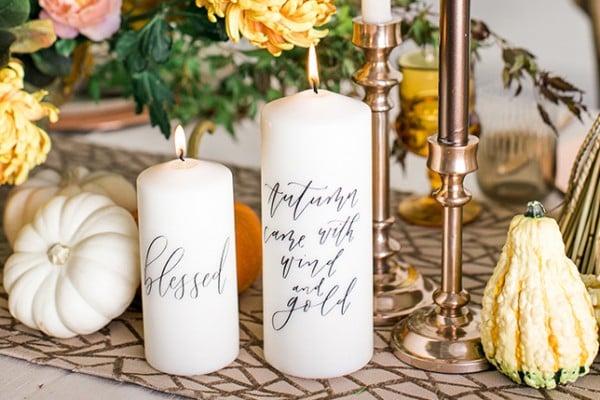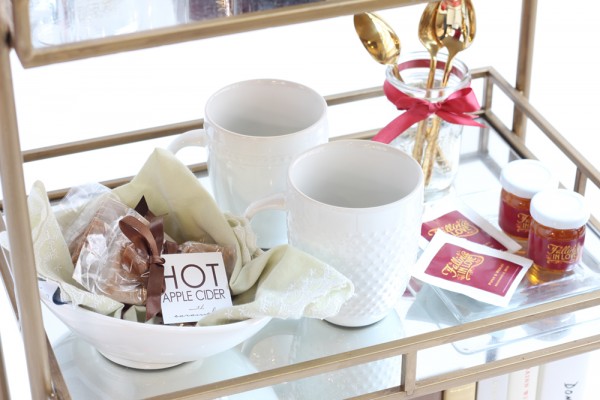We absolutely love the look and feel of handwriting. There’s just something about a handwritten letter, card, note or sign that feels so genuine. But in a time of all things digital, we’ve been feeling like handwriting should be recognized for the special craft that it is. Lately, we’ve been noticing that calligraphy is making a big appearance in the world of weddings and this got us thinking about how we could learn this pretty skill ourselves. So we did a lot of research to find helpful tips, and, of course, decided to share our findings with you! Check out the tips below and make sure to take a peek at some of our favorite ways to incorporate calligraphy into your wedding. We encourage you to learn more about this craft, practice, and please don’t forget to share with us how it goes! Plus don’t forget to spread the word that January 23rd is National Handwriting Day!

(image credit: Thepostmansknock)
Pick A Style You Want To Practice
There are so many styles of writing to choose from… seriously, just take a look at these examples!
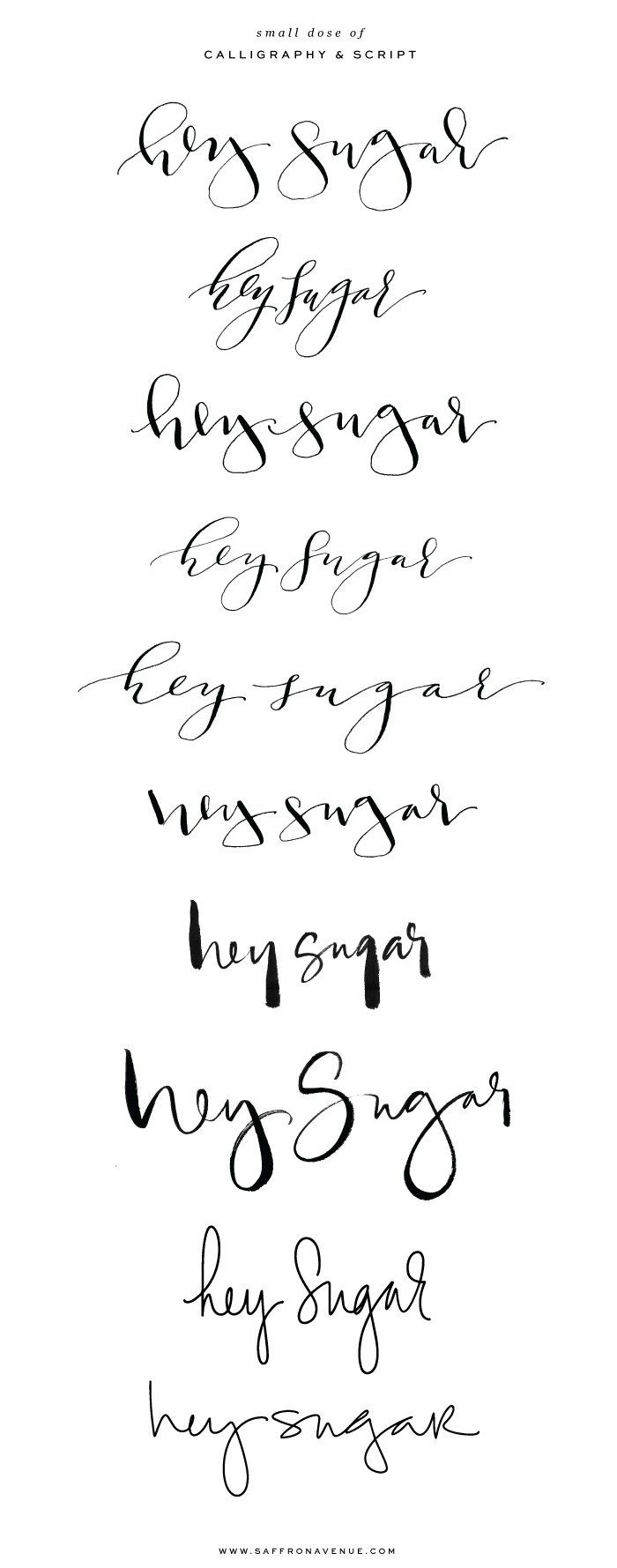
(image credit: Saffronavenue)
When first starting out with learning calligraphy, we suggest picking a script style and sticking to practicing it for a while. Think about how in elementary school you used to trace a letter and then write that same letter over and over again. It’s the same concept here. The more you practice, the more you will easily be able to write in your favorite script! And once you get the hang of writing with that “calligraphy look”, you’ll even be able to write with your own style.
Remember: Thin Up, Thick Down

(image credit: Piecescalligraphy)
The key to getting that “calligraphy look” is to use a thin stroke when writing upwards and a thick stroke when writing downwards. This is achieved by holding the pen at slightly different angles. See the difference above?
Try Starting with “Faux Calligraphy”
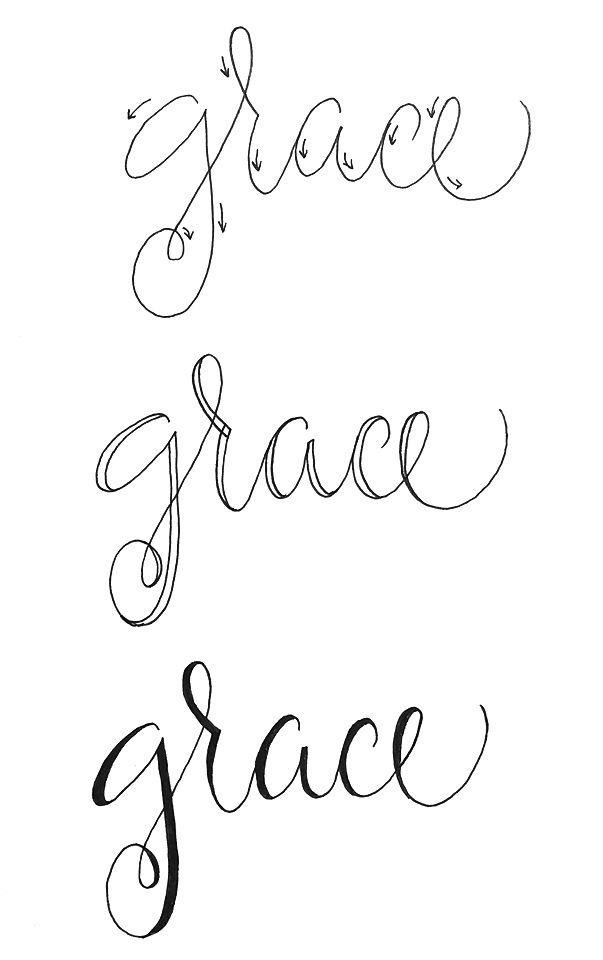
(image credit: Pinterest)
To get the hang of remembering when to use a thin or thick stroke, we suggest trying what’s called faux calligraphy. Faux calligraphy is when you write out each word with no technique required. (Just try to use your prettiest cursive!) Then, go back to the part of each letter that required a downward stroke and make it thicker by simply going over the line again.
The Best Nib, Nib Holder, & Ink For Beginners

(image credit top to bottom: Paperinkarts, Juliabausenhardt, Juliabausenhardt)
Are you wondering what nib, nib holder, and ink to start learning calligraphy with? With such a wide variety of options out there, we understand that it can get tricky to know what supplies to choose. We did a lot of research on what supplies are best to start out with and time and time again we came across the same items. According to Julia Bausenhardt, who runs a blog about hand lettering and calligraphy, the Nikko G. nib is great for beginners because it is both reliable and sturdy. She also says that you will want to start out with a straight nib holder. This is easier to get the hang of until you are ready to start writing with a slant. As far as ink, Julia says to try India Ink or Sumi Ink.
Nib Basics
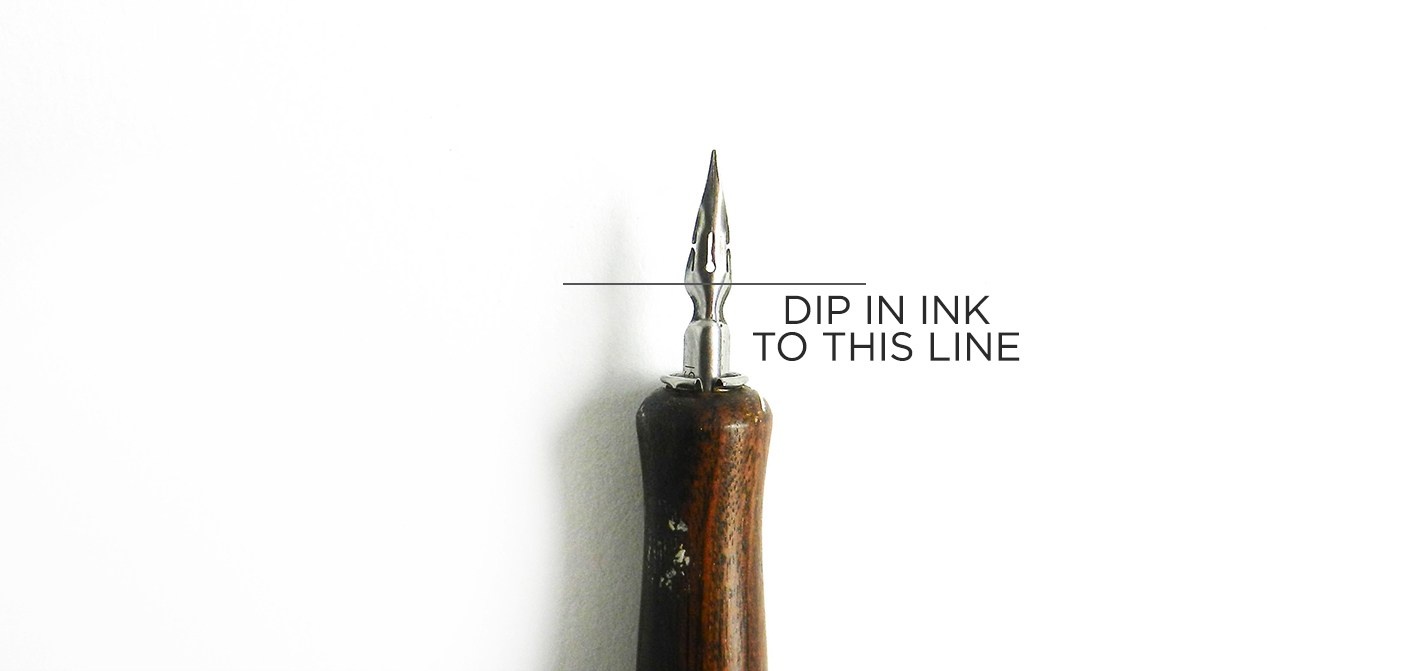
(image credit: Thepostmansknock)
Once you have the proper tools, you should probably know a little bit more about how they work. Think of the nib as the tip of a pen – it’s where your ink will be coming from. You’ll want to dip your nib in ink that goes just past the vent hole as needed. It’s also very important to keep your nibs clean when not in use. When you’re done writing, gently scrub your nib with a toothbrush and dish soap to clean off any leftover ink. Make sure that you dry it completely after scrubbing to avoid rust and store in a safe place such as an old mint tin so that it doesn’t get bent.
Paper Makes A Difference.

(image credit: Thepostmansknock)
According to Lindsey Bugbee of The Postman’s Knock, choice of paper can make all the difference! Here she shows an example of paper where her calligraphy looks smooth and sits on the surface (top) compared to calligraphy that turned out fuzzy looking after the ink soaked into the paper (bottom). She recommends using these papers for the best results.
- Georgia-Pacific Standard Recycled Paper
- HP #24 laserjet paper
- HP #32 laserjet paper
- Rhodia Pad
- Strathmore 300 Series Drawing Paper
With a little time, you’ll even be able to use calligraphy on nonpaper items such as stones, wood, and fruit! Practice makes perfect.
Projects For Your Wedding
Now that you’ve practiced, there are plenty of ways to put your calligraphy skills to use. We’re big on using calligraphy for wedding invitations, decorations, and more, so we decided to share a few of our favorites!

(image credit: Heyweddinglady)

(image credit: Stylemepretty)

(image credit: Modwedding)
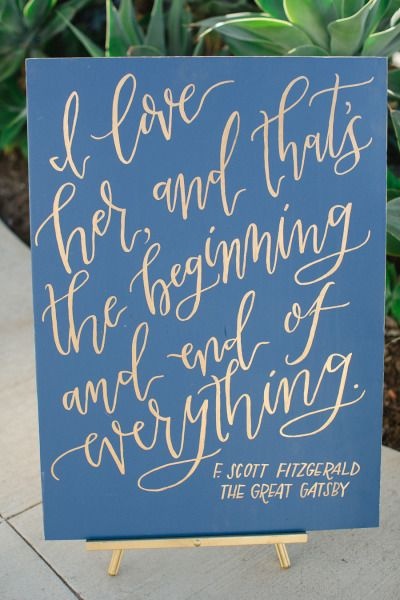
(image credit: Stylemepretty)

(image credit: Greenweddingshoes)

(image credit: Pinterest)

(image credit: Greenweddingshoes)

(image credit: Brides)
Which of these ideas do you like best? Are you reading to start working on your calligraphy skills? We love to hear from our readers, so please feel free to leave us a comment below with your thoughts! And don’t forget to show us your finished calligraphy work!


